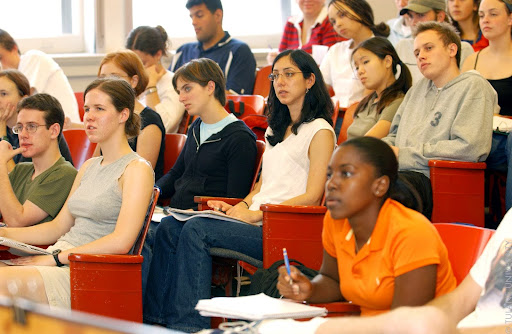Mass shooting stories must be reported at higher propensity
For many school systems across the country, the 2018-2019 academic year has just began. But sadly in today’s America, it would not come as a shock to anyone if a first-year walked into their college, high school or even middle school for the first time and feared that they could lose their life at the hands of a shooter.
I believe that a majority of the United States would prefer not to have shootings seen as a part of American culture. While the narrative of school shootings is the prominently shown scenarios of mass shootings in media, they have happened in a variety of places with no clear pattern. The motives of the shooter, the location of the shooting and the weapon used: all of these have many different variables which have exponentially increased, parallel to the number of deaths caused by shooters.
Since September 1, there have been eight incidents reported as mass shootings, according to the Gun Violence Archive. The non-profit organization is an online archive of gun violence incidents collected from over 2,500 media, law enforcement, government and commercial sources daily in an effort to provide near-real time data about the results of gun violence. They define mass shootings as “events in which four or more people, excluding the shooter, were shot but not necessarily killed at the same general time and location.”
The statistics for mass shootings over 2018 alone in the United States are disturbing. As of September 5, there have been 240 mass shooting incidents reported by the Gun Violence Archive. Sadly and astonishingly, there has only been one calendar week since 2013 where an incident classified as a mass shooting did not occur in our country.
Mass shootings in America have stemmed one of today’s top political debates: gun control. The biggest question is who or what is to blame for this epidemic of shootings?
One area that has been targeted consistently in the media is the mental health of the shooters. The major issue with jumping straight to mental health is that all squares are rectangles, but not all rectangles are squares. The argument of treating people with severe mental health concerns has fueled stigma surrounding our fellow citizens.
Democrats have pointed to the firearms as the main cause of mass shootings.
The United States has the among the world’s most relaxed laws and regulations relating to purchasing guns. According to the United Nations Development Programme and Gunpolicy.org, the disparity of guns owned by American citizens versus citizens of other countries is tremendous. There are over a hundred guns per hundred people in America.
A 2016 study by the Society for Epidemiologic Research showed that “the simultaneous implementation of laws targeting multiple elements of firearms regulations reduced firearm-related deaths in certain countries. Some specific restrictions on purchase, access, and use of firearms are associated with reductions in firearm deaths.”
The primary Republican argument is the opposite. Several politicians, including Speaker Paul Ryan, believe that stronger background checks and regulation would be the stronger alternative instead of infringing on the second amendment rights of law-abiding citizens. Pro-gun officials’ major argument is that guns can be used to protect, and putting arms in the right citizens can combat the rampages of mass shooters.
Protecting the second amendment protects the freedom of American citizens. The call for a gun ban sparks a fear that people will lose this protection.
The National Rifle Association, following the incidents at Marjory Stoneman Douglas High School in Florida, called for arming teachers in schools in order to prevent mass shootings in schools. Typically, the organization has gone silent following mass shootings, and it took until this year for them to address this public issue.
The sad truth is that the question of who to blame does not have a clear answer, and it never will because of the number of factors that go into these tragedies. The motives for the attackers are not aligned and are too diverse to point to a specific reason.
Are these incidents a hundred percent preventable? I firmly believe they are not. The balance between liberty and security has always been a fine line to walk, but what we as a country, cannot do is allow this issue to become an elephant in the room. It is important that the stories of shootings, which are seemingly happening on a weekly basis, are told.
With anti-gun legislation being combatted heavily on one side and the call for more guns being combatted heavily on the other, what solution can we come to? As a nation, we have not found a suitable answer, but this is not something that we can bank on fizzling away.
The best option, in my view, is to continue to share these stories. Not to incite fear in people, but so we never lose sight that this epidemic is continuing and is a topic that we should not distract ourselves from until an actual change or action is put into place.









John Taylor • Sep 8, 2018 at 12:40 pm
For the most part, this is a fairly well-balanced article, and I thank you for that. I would caution you that you have to be careful these days about your information sources. Unfortunately, both sides, especially in the argument over firearms, are prone to cherry-pick their data to prove a point. The problem is exacerbated by the mass media in that school shootings receive excessive media attention compared to violence statistics from other areas which exceed the mass shooting casualties in both single cases and certainly over longer periods of time. A rational dialogue would be a worthy goal, especially if it produced results from our government instead of their kowtowing to whichever special interest supports them the most monetarily. Kudos on trying to present a fair picture of a subject whose overall importance and significance are routinely distorted.
Patrick Orsban • Sep 8, 2018 at 9:21 am
The problem with using the “data” from the Gun Violence Archive is they are a bunch of liberals who make mass shooting claims over events that no Gov agency agrees with.
If you really want to know how seldom we have a mass shooting (at least, the same kind that is recorded in Europe, which the liberals like to compare us too) just use the FBI UCR stats. Then apply that data to “per capita”. Find out for yourself.
I find it interesting that this liberal writer never mentions that these mass shootings always occur in no gun zones.
My question to the writer, why do you feel that disarming more victims makes anyone but the killers safer?